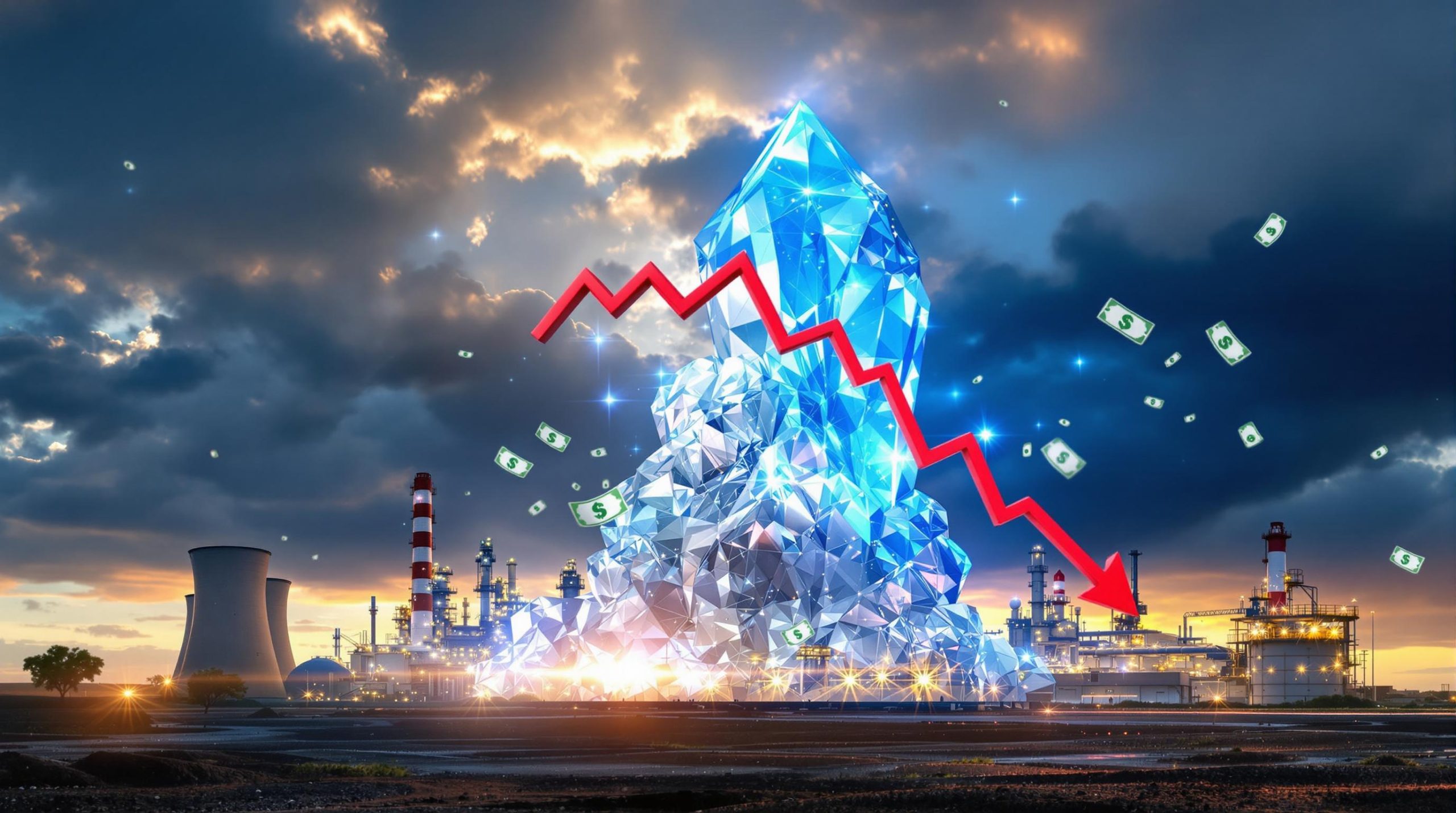What is the Simandou Mine and Why Does it Matter?
The Emerging African Giant
The Simandou mine, located in Guinea, Africa, holds one of the largest untapped high-grade iron ore deposits globally, with Rio Tinto projecting exports to commence by late 2025. Production will ramp up over 30 months to reach 60 million tonnes annually, targeting a premium market position due to its 65% iron content—surpassing the Pilbara's average grade of 61%. This higher purity reduces impurities during steelmaking, enabling Simandou to command higher prices. Rio Tinto's involvement ties the project to Australia's mining sector, despite its geographic distance.
The Strategic Importance
Dubbed the "Pilbara killer," Simandou symbolizes Africa's potential to challenge Australia's iron ore dominance. However, its output represents less than 7% of WA's current production. Resources analyst Tim Treadgold emphasizes the disparity: "Put it in perspective—60 million tonnes against [around] 900 million tonnes. It's not even 10 percent". While Simandou's high-grade ore could pressure WA's iron ore sector, its limited scale and gradual production increase mitigate immediate threats to the established markets.
How Important is Iron Ore to Western Australia?
Economic Significance
Iron ore remains WA's economic backbone, contributing 25% of state government revenue through royalties in 2024. The Pilbara region exported nearly 950 million tonnes in 2023, accounting for 38% of global supply. This dominance underscores WA's pivotal role in meeting demand from China (the largest importer), Japan, and South Korea. However, China's steel production is peaking as it transitions to recycling scrap metal, mirroring trends in the U.S. and Europe. Treadgold notes: "All the iron ore turned into steel over centuries is still out there…an above-ground mine", signaling reduced reliance on raw ore.
Key Markets and Trends
WA's export growth, driven by China's infrastructure boom from the 2000s to mid-2010s, now faces headwinds. Matt Grudnoff, senior economist at the Australia Institute, warns that WA's economy risks repeating historical patterns of over-specialization: "Economic history is littered with examples of economies that withered due to market disruptions". Diversification remains critical, though Grudnoff admits it is "easier said than done".
Will Simandou Disrupt WA's Iron Ore Dominance?
Comparing Production Scales
Simandou's 60 million tonnes annually pales against WA's iron ore sector's 950 million tonnes, highlighting structural limitations. Even at full capacity, Simandou would supply just 6.3% of WA's output. Treadgold dismisses apocalyptic narratives: "Mines close daily; new ones must fill the gap. It's a natural process". WA's established infrastructure and economies of scale further insulate it from immediate competition.
Industry Perspective
Analysts agree Simandou's impact will be gradual. Grudnoff predicts: "Any impact will be over the longer term, allowing WA time to adjust". The mine's high-grade ore may complement rather than displace WA's exports, particularly as steelmakers blend ores to optimize efficiency. Rio Tinto's dual role in both regions also mitigates adversarial competition.
What Are the Long-Term Risks for WA's Economy?
Economic Diversification Concerns
WA's reliance on iron ore royalties creates systemic risks. Grudnoff analogizes: "Financial planners say not to put all eggs in one basket. WA has too many eggs in the iron ore basket". A downturn could destabilize housing markets, as high-wage mining job losses force mortgage defaults. Historical boom-bust cycles, such as the 2010s price crash, exemplify this ore price volatility.
Potential Economic Impacts
A sustained price decline could reduce state revenue, impacting public services and infrastructure investment. Unemployment spikes might trigger housing sell-offs, echoing past corrections where WA's property prices fell by over 20%. Grudnoff cautions: "House prices and unemployment would be impacted…the economy would continue, just slower".
Adaptation Strategies
Diversification into renewable energy and critical minerals offers potential, though Grudnoff stresses governments should "allow the economy to grow into areas it's good at". WA's high-grade ore could also play a role in sustainable steel production, aligning with global decarbonization efforts.
How is the Global Iron Ore Market Evolving?
The Rise of Steel Recycling
Global steel production increasingly relies on scrap, with recycled steel accounting for 40% of U.S. output. China's scrap recycling industry, though nascent, is projected to meet 20% of its steel demand by 2030. Treadgold highlights this shift: "Recycled steel is becoming a main source, reducing raw ore demand".
Finding a New Market Position
WA's future lies in supplying high-grade ore to supplement recycling. As steelmakers prioritize efficiency, blending premium ores with scrap could sustain demand. Treadgold suggests WA find a "new place in the pecking order", leveraging quality over quantity.
Balancing Competition and Collaboration in Global Mining
Geopolitical Considerations
Africa's Simandou mine represents China's strategic push to diversify iron ore sources and reduce dependence on Australian imports. This shift comes amid diplomatic tensions between Beijing and Canberra, with Chinese investment in Simandou reflecting broader supply chain security concerns. Despite these maneuvers, WA's established reliability and proximity to Asian markets provide competitive advantages that Simandou cannot easily overcome.
Infrastructure Challenges for Simandou
While Simandou boasts exceptional ore quality, its remote location necessitates massive infrastructure investment. The project requires constructing a 650km railway through challenging terrain and a deep-water port—expenses that add significant operational costs compared to WA's optimized logistics. These barriers may delay full production capacity beyond initial projections.
FAQ: Common Questions About Simandou and WA's Iron Ore Future
When will Simandou begin exporting iron ore?
Exports are slated for late 2025, ramping up over 30 months to 60 million tonnes annually.
Why is Simandou's ore more valuable?
Its 65% iron content reduces impurities, yielding higher steelmaking efficiency and prices.
Could Simandou replace WA's production?
No. Simandou's output is under 7% of WA's volume, making it complementary, not substitutive.
How vulnerable is WA's economy?
Highly vulnerable. Iron ore royalties fund 25% of state revenue, and diversification remains challenging.
What factors might delay Simandou's development?
Political instability in Guinea, financing challenges, and infrastructure complexities could postpone the projected timeline. Previous attempts to develop the deposit have stalled due to corruption allegations and ownership disputes.
How might WA's iron ore sector respond to Simandou?
WA producers will likely focus on efficiency improvements, cost reduction, and potentially developing higher-grade deposits to maintain competitive advantage against Africa's Simandou mine. For investors interested in this sector, a comprehensive mining stocks guide can help navigate these changing dynamics. Furthermore, understanding broader Australia's mining trends and global commodity insights provides additional context for evaluating the future of iron ore markets.
Want to Stay Ahead of Major Mineral Discoveries?
Discovery Alert's proprietary Discovery IQ model instantly identifies significant ASX mineral discoveries, delivering real-time notifications that give you a critical market advantage before news spreads widely. Explore how historic discoveries have generated substantial returns by visiting the Discovery Alert discoveries page and position yourself to capitalise on the next market-moving announcement.




